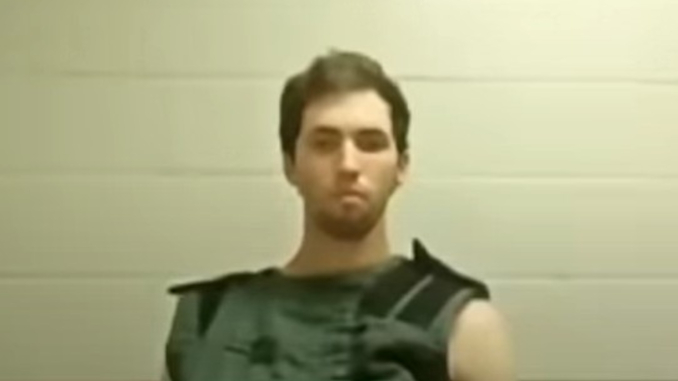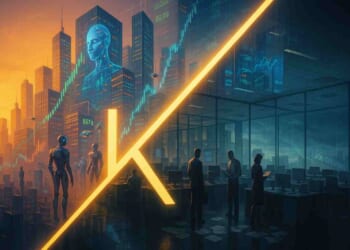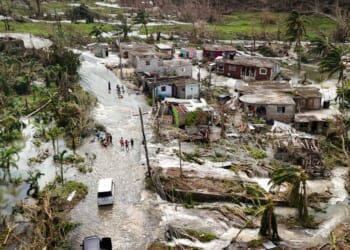
By José Niño
A 16-year-old boy walks into his Colorado high school with a revolver, fires 20 rounds in nine minutes, wounds two classmates, then takes his own life. The tragedy at Evergreen High School in September 2025 might have seemed like another isolated incident of school violence, but investigators soon discovered something more disturbing.
Click the Link Below to Listen to the Audio of this Article
Authorities revealed that Desmond Holly had been “radicalized by an extremist network,” part of a growing phenomenon that challenges everything law enforcement thought it knew about domestic terrorism.
Holly’s case represents the emergence of nihilistic violent extremism (NVE)—a new category of domestic terrorism that has law enforcement scrambling to understand actors who commit violence not for political goals but simply to watch the world burn. Unlike traditional extremists who seek to advance specific ideologies, these individuals are driven by what the FBI describes as “a hatred of society at large and a desire to bring about its collapse by sowing indiscriminate chaos, destruction, and social instability.”
FBI Director Kash Patel reported in September 2025 that a “substantial portion” of domestic terrorism investigations now involve NVEs, marking a seismic shift in the threat landscape. The bureau has opened more than 250 investigations across all 50 states, with a particular focus on online networks that systematically target vulnerable populations—especially minors.
The FBI defines NVEs as:
[I]ndividuals who engage in criminal conduct within the United States and abroad, in furtherance of political, social, or religious goals that derive primarily from a hatred of society at large and a desire to bring about its collapse by sowing indiscriminate chaos, destruction, and social instability.
These actors substitute visual aesthetics and cultural references for substantive beliefs, creating a movement built on misanthropy rather than some kind of ideology.
What makes NVEs especially dangerous is their rejection of all ideological frameworks. Traditional counterterrorism approaches rely heavily on understanding an actor’s political or religious motivations to assess threats and develop intervention strategies. With nihilistic extremists, law enforcement faces individuals motivated purely by destructive intent.
At the center of this new threat landscape sits 764, a decentralized international network that emerged in 2021 and has become the most prominent NVE organization. Named after the ZIP code prefix of its founder’s location in Texas, 764 operates primarily through Discord and Telegram social media platforms, creating what the Justice Department has classified as a “tier one” investigative matter.
Federal charging documents reveal the network’s depravity: 764 systematically targets vulnerable children online, coercing them into producing violent, degrading and explicit content under threat and manipulation. Victims have been forced to carve symbols into their bodies to create “cut signs” and “blood signs.”
Holly’s trajectory exemplifies how 764 and similar networks radicalize American youth. The FBI had been investigating a social media account believed to belong to him since July 2025, tracking posts about “planning of a mass shooting with threats non-specific in nature.” Despite two months of monitoring, the bureau was unable to identify the account holder until after the shooting.
He was allegedly active on “WatchPeopleDie,” a graphic website that hosts real violence videos—including beheadings and shootings—that has been linked to multiple school shooters. This platform has become a pipeline for online gore consumption to real-world violence.
Holly’s digital footprint bore classic signs of nihilistic radicalization:
- A Twitter post of a revolver and ammunition box two hours before the shooting;
- TikTok videos showing him in tactical gear, including a skull mask, ballistic vest, and a knife with Nordic rune symbols; and
- Clothing with “WRATH” written in red lettering worn days before the attack.
The rise of NVEs reflects deeper social pathologies that extend far beyond individual psychological problems. Traditional institutions that once provided meaning and belonging have weakened, leaving many young people adrift. Family structures have fragmented, religious participation has declined, and civic engagement has withered—creating a vacuum that extremist networks exploit.
Discord servers and Telegram channels now serve as recruiting grounds where isolated adolescents find distorted forms of belonging. These platforms validate feelings of alienation while channeling them toward violence, offering notoriety through destruction.
Researchers point to “significance quest theory,” when conventional paths to meaning fail, some individuals seek purpose through extreme actions. For many young Americans facing economic uncertainty, social isolation, and cultural upheaval, violence becomes a perverse form of self-actualization.
The emergence of NVE poses unprecedented challenges for agencies designed to combat ideologically motivated terrorism. Traditional threat assessments depend on understanding goals and methods, but nihilistic extremists reject all belief systems in favor of pure destruction, making them nearly impossible to predict.
The FBI has tried to adapt by creating educational materials for parents and educators to recognize warning signs of NVE recruitment. Yet those signs—social withdrawal, online gaming, fascination with violent content—often mirror normal adolescent behavior. Distinguishing between ordinary teenage angst and genuine radicalization requires resources that most schools and families lack.
The rise of NVEs forces uncomfortable questions about America’s ability to provide meaning and purpose to its youngest members. When traditional institutions fail to offer pathways to belonging, some will inevitably seek it through senseless violence or other dangerous actions.
Whether the American political class has the will to address the underlying social decay that fuels these networks remains an open question—one that may determine how many more families will face the nightmare that struck Evergreen High School on the morning of Sept. 10, 2025.

















